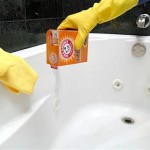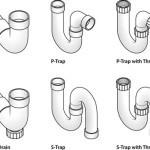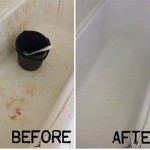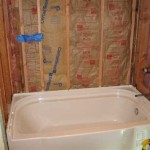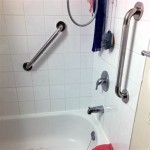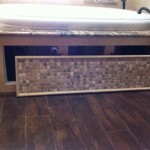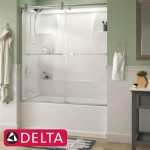Convert a Bathtub to a Shower: A Comprehensive Guide
Transforming a bathtub into a shower is a popular home improvement project that can enhance the functionality and style of a bathroom. Whether you're seeking a more modern and convenient showering experience or simply seeking to utilize space more efficiently, converting a bathtub is an effective solution.
Benefits of Converting a Bathtub to a Shower
- Increased Shower Space: Removing the bathtub frees up floor space, providing a more spacious and accessible shower area.
- Improved Accessibility: A shower is significantly easier to enter and exit, making it ideal for individuals with mobility issues or small children.
- Enhanced Functionality: Showers can be customized with various features, such as multiple shower heads, body jets, and grab bars, offering a more enjoyable and therapeutic showering experience.
- Space Optimization: Converting a bathtub frees up valuable bathroom space, which can be utilized for additional storage, a larger vanity, or a more spacious toilet area.
- Reduced Maintenance: Showers require less maintenance than bathtubs, as they do not require regular cleaning and sealing.
Planning and Preparation
Before embarking on the conversion project, it's crucial to plan and prepare thoroughly. Consider the following:
- Plumber and Electrician Requirements: The project may require specialized plumbing and electrical work, so hiring licensed professionals is recommended for proper installation.
- Shower Base Selection: Determine the size, shape, and material of the desired shower base. Options include acrylic, fiberglass, and stone.
- Shower Enclosure: Choose a shower enclosure, such as a framed or frameless glass door, a sliding door, or a curtain, to complement the bathroom's style.
- Faucet and Fixtures: Select a showerhead, faucet, and other fixtures that align with the desired functionality and aesthetics. li>Tile or Wall Surround: Decide on the type of tile or wall surround to be installed around the shower area.
Conversion Process
The conversion process involves several steps:
- Demolition: Carefully remove the bathtub, plumbing fixtures, and wall surround.
- Plumbing:专业的管道工将安装新的淋浴阀门、管道和排水管。
- Shower Base Installation: The selected shower base is installed and secured in place.
- Wall Surround Installation: Tile or other wall surround materials are installed around the shower area.
- Shower Enclosure Installation: The chosen shower enclosure is fitted and secured.
- Faucet and Fixture Installation: The showerhead, faucet, and other fixtures are installed.
Finishing Touches
Once the conversion is complete, add finishing touches to enhance the bathroom's overall aesthetic and functionality:
- Lighting: Install appropriate lighting fixtures to provide adequate illumination within the shower area.
- Storage: Consider adding shelves or niches within the shower to accommodate toiletries and other essentials.
- Accessories: Enhance the shower experience with accessories such as a towel bar, robe hook, and bath mat.
Cost Considerations
The cost of converting a bathtub to a shower varies depending on factors such as the size of the bathroom, the materials used, and the complexity of the installation. Expect to budget anywhere from $1,500 to $5,000 or more.
Converting a bathtub to a shower can be a rewarding home improvement project that enhances the functionality, style, and accessibility of a bathroom. By carefully planning, selecting suitable materials, and executing the conversion process with precision, you can create a beautiful and practical shower space that will provide years of enjoyment.

Bathtub To Shower Conversion Safe Bathroom For Seniors

Convert Shower To Bath Tub Conversion Planet

Top 4 Benefits Of Tub To Shower Conversion Silverado Showers Llc

Tub To Shower Conversion Long Island Ny Bathroom Buddy

Tub Conversions To Shower Conversion Bath Planet

Bathtub To Shower Conversion Safe Bathroom For Seniors

Average Bathtub To Shower Conversion Cost 2024 Forbes Home

The Pros And Cons Of Converting A Standard Tub Into Walk In Shower Naperville

Tub To Shower Conversion Naples Repair Remodeling

Fixr Com Bathtub To Shower Conversion Cost Tips And More
Related Posts

